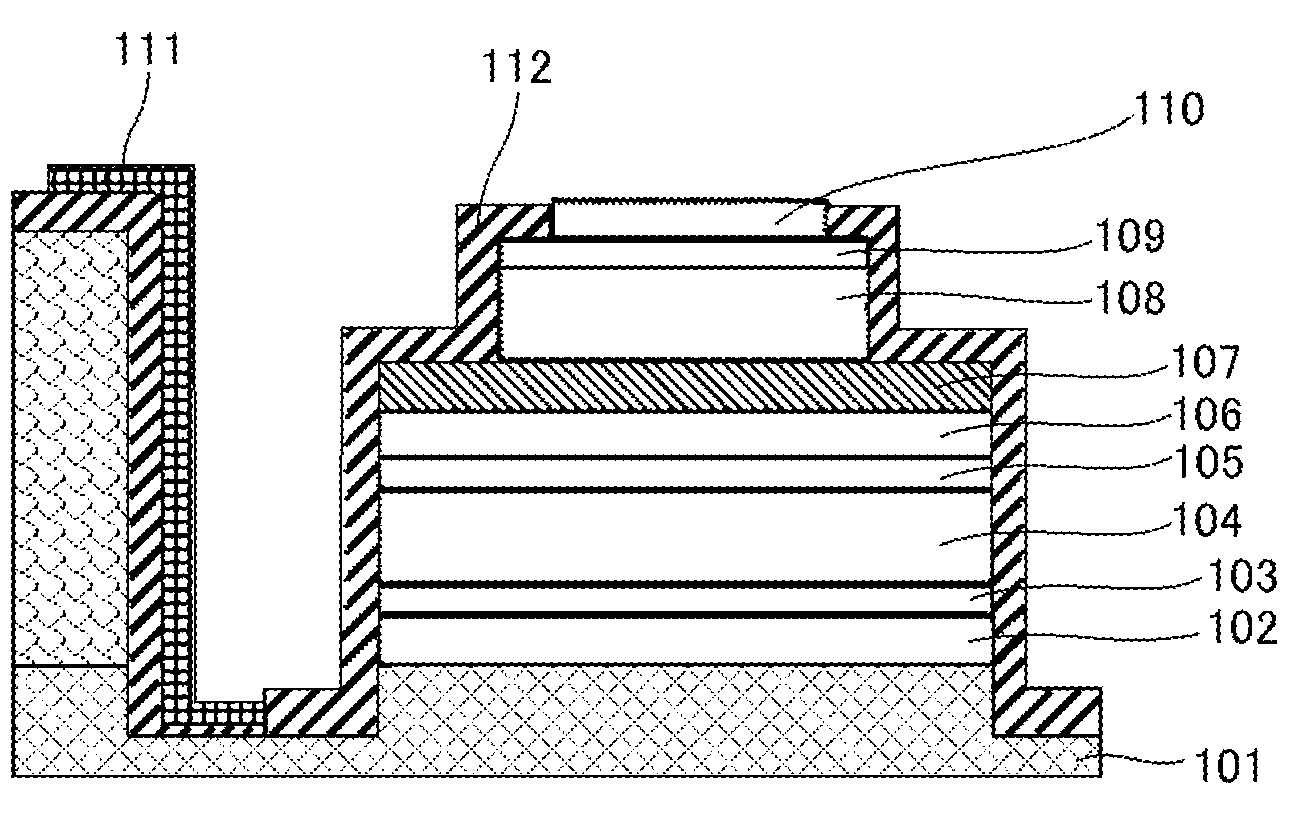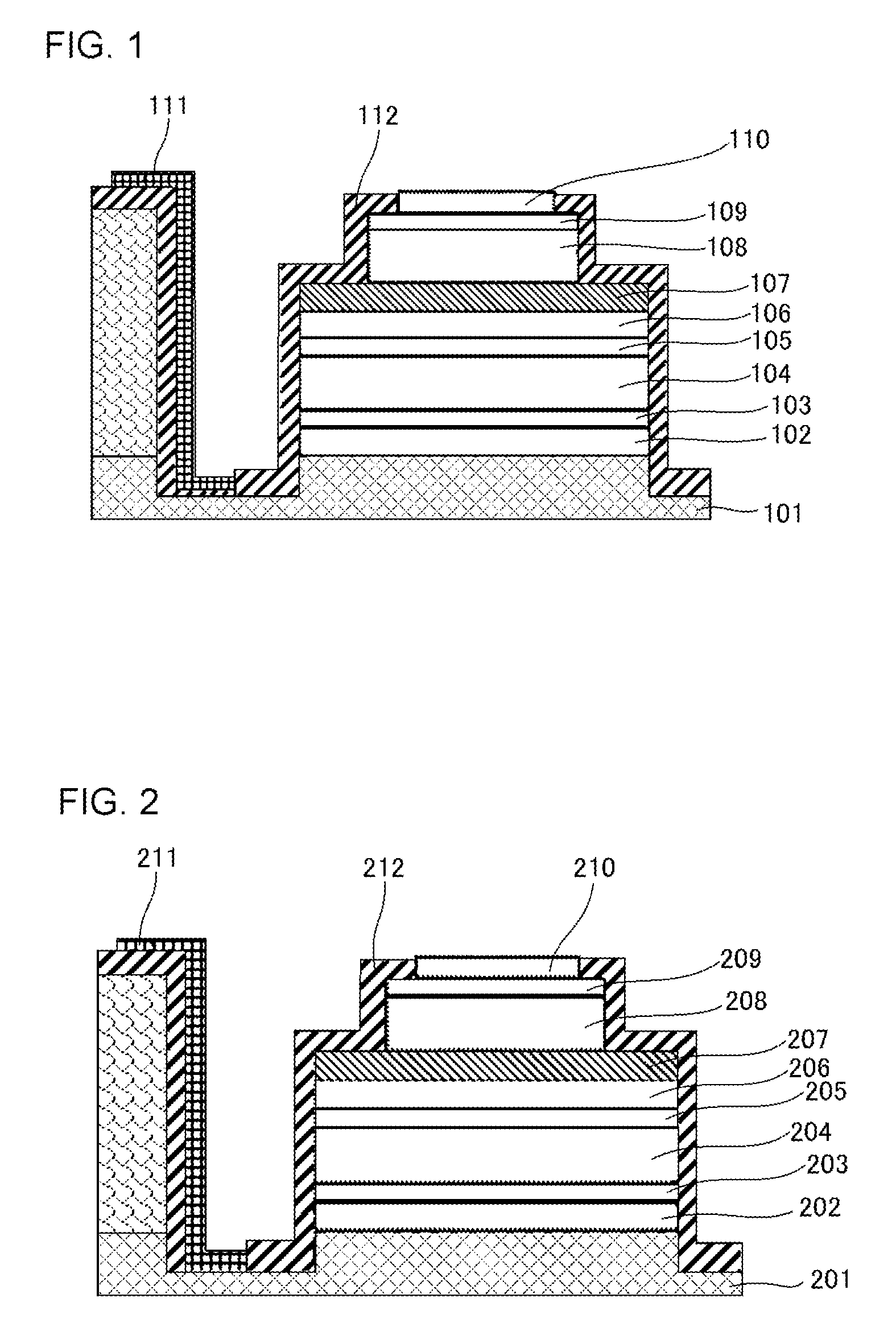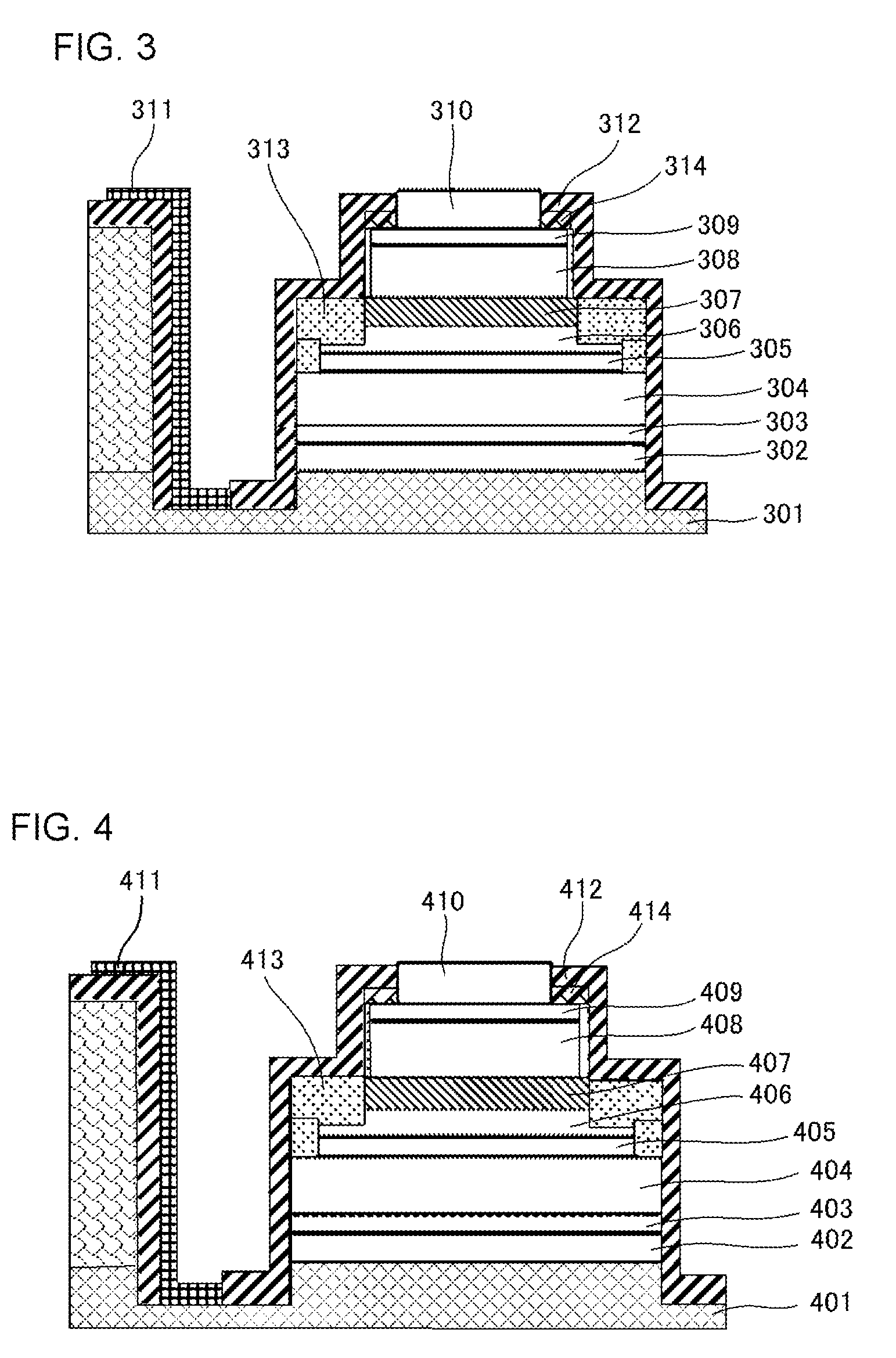Semiconductor photo detector
a technology of photo detector and semiconductor, applied in the direction of semiconductor devices, basic electric elements, electrical appliances, etc., can solve the problems of difficult understanding of design and manufacture conditions, acquiring manufacture tolerance, etc., and achieve the effects of reducing the level of generated dark current, reducing the electric field, and reducing the interface of passivating film 112
- Summary
- Abstract
- Description
- Claims
- Application Information
AI Technical Summary
Benefits of technology
Problems solved by technology
Method used
Image
Examples
second exemplary embodiment
[0061]Configurations of second exemplary embodiment according to the present invention will be described in reference to FIG. 3. The semiconductor photo detector of second exemplary embodiment has a layer-structure, including a selective etching layer 302 of the first-type conductivity, a buffer layer 303 of the first-type conductivity, a multiplier layer 304 (undoped layer), a field-relaxing layer 305 of the second-type conductivity, a light absorption layer 306 of the second-type conductivity, a selective etching layer 307 of the second-type conductivity, a buffer layer 308 of the second-type conductivity, a contact layer 309 of the second-type conductivity, an electrode in the side of the second-type conductivity 310, which are sequentially deposited on a semiconductor substrate 301.
[0062]A second mesa is formed on the semiconductor substrate 301, and a first mesa is formed on the second mesa. The first mesa includes the buffer layer 308 of the second-type conductivity, the conta...
example 2
[0088]A configuration of a semiconductor photo detector in example 2 is shown in Table 2 and FIG. 4. A semiconductor photo detector of example 2 is configured that a control of electric field is conducted by utilizing a hydrogen passivation to enhance internal electric field and decrease electric field with the interface of the passivation.
TABLE 2IMPURITYTHICK-CONCEN-MATE-NESSTRATIONLAYERS AND NUMERALSRIAL(μm)(cm−3)SEMICONDUCTOR SUBSTRATE 401InPN-TYPE SELECTIVE ETCHINGInP0.21 × 1018LAYER 402N-TYPE BUFFER LAYER 403InAlAs0.11 × 1018MULTIPLIER LAYER 404InAlAs0.2UNDOPEDP-TYPE FIELD-RELAXING LAYERInAlAs0.15 × 1017405P-TYPE LIGHT ABSORPTIONInGaAs1.01 × 1016LAYER 406P-TYPE SELECTIVE ETCHINGInP0.25 × 1017LAYER 407P-TYPE BUFFER LAYER 408InAlAs0.61 × 1018P-TYPE CONTACT LAYER 409InGaAs0.25 × 1018
[0089]The semiconductor photo detector of example 2 is manufactured as follows. An n-type selective etching layer 402, an n-type buffer layer 403, a multiplier layer 404, a p-type field-relaxing layer ...
example 3
[0096]A configuration of a semiconductor photo detector in example 3 is shown in Table 3 and FIG. 5. A semiconductor photo detector of example 3 is configured to have a PIN-PD structure, in which a control of electric field is conducted by utilizing a hydrogen passivation to enhance internal electric field and decrease electric field with the interface of the passivation.
TABLE 3IMPURITYTHICK-CONCEN-MATE-NESSTRATIONLAYERS AND NUMERALSRIAL(μm)(cm−3)SEMICONDUCTOR SUBSTRATE 501InPN-TYPE SELECTIVE ETCHINGInP0.21 × 1018LAYER 502N-TYPE BUFFER LAYER 503InAlAs0.11 × 1018N-TYPE ELECTRONInAlAs1.01 × 1016TRANSPORT LAYER 504P-TYPE LIGHT ABSORPTIONInGaAs1.01 × 1016LAYER 506P-TYPE SELECTIVE ETCHINGInP0.25 × 1017LAYER 507P-TYPE BUFFER LAYER 508InAlAs0.61 × 1018P-TYPE CONTACT LAYER 509InGaAs0.25 × 1018
[0097]The semiconductor photo detector of example 3 is manufactured as follows. An n-type selective etching layer 502, an n-type buffer layer 503, an n-type electron transport layer 504, a p-type light...
PUM
 Login to View More
Login to View More Abstract
Description
Claims
Application Information
 Login to View More
Login to View More - R&D
- Intellectual Property
- Life Sciences
- Materials
- Tech Scout
- Unparalleled Data Quality
- Higher Quality Content
- 60% Fewer Hallucinations
Browse by: Latest US Patents, China's latest patents, Technical Efficacy Thesaurus, Application Domain, Technology Topic, Popular Technical Reports.
© 2025 PatSnap. All rights reserved.Legal|Privacy policy|Modern Slavery Act Transparency Statement|Sitemap|About US| Contact US: help@patsnap.com



